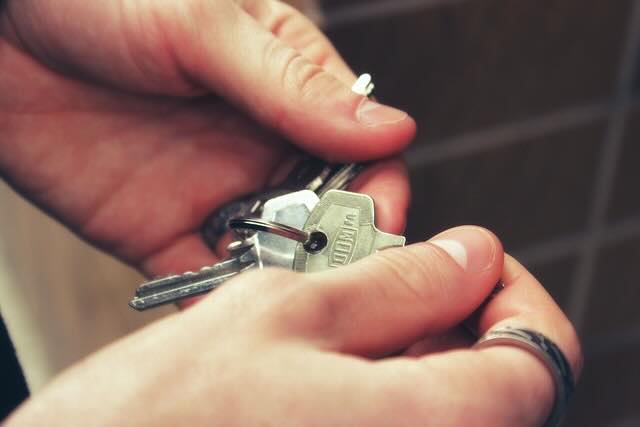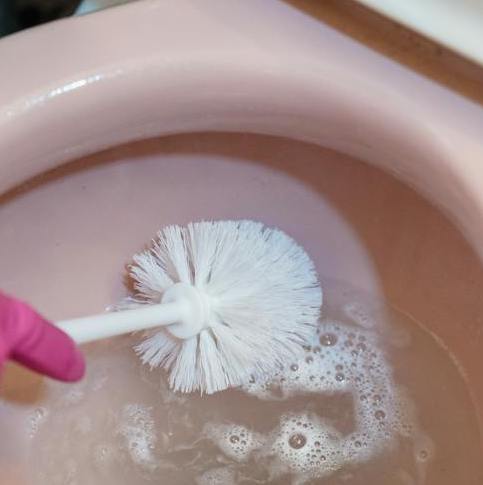Moving in with a new roommate often comes with its own set of adjustments and compromises, but when a pet is part of the equation, it adds an extra layer of consideration to your co-living arrangement. Whether it’s a playful puppy, a graceful cat, or any other pet, these adorable creatures bring joy and warmth to a home, but they also require specific care, understanding, and routines. As you prepare to share your space not just with a new human but also with their non-human companion, it’s essential to navigate this transition thoughtfully and knowledgeably.
This article is designed to guide you through the crucial conversations and considerations when moving in with a roommate who has a pet. From understanding the pet’s basic needs and daily routines to managing health, wellness, and emergencies, we’ll cover the key aspects that ensure a harmonious and respectful living situation for all – including the four-legged or feathered members. Plus, we’ll provide helpful tips on setting boundaries, sharing responsibilities, and maintaining a clean and safe living environment. With the right approach and understanding, living with your roommate and their pet can be a rewarding and enriching experience.

Table of Contents
Questions to Ask
- What type of pet do you have, and how old is it?
- Understanding the species, breed, and age can give you insights into the pet’s behavior, needs, and the care they require.
- Is your pet up-to-date on vaccinations and preventative treatments?
- Ensuring the pet is vaccinated and receives regular preventative care is essential for the health and safety of both the pet and the household.
- Does your pet have any specific dietary needs or restrictions?
- Knowing about any special dietary requirements or allergies helps in maintaining the pet’s health and avoiding potential issues.
- What is your pet’s daily routine, including feeding, exercise, and bathroom breaks?
- Understanding the pet’s routine helps in accommodating their needs and integrating their schedule with your lifestyle.
- How does your pet handle being alone, and how do you manage it when you’re not home?
- It’s important to know how the pet copes with solitude, especially if you or your roommate spend long hours away from home.
- How does your pet behave around new people and other animals?
- Knowing the pet’s behavior towards strangers and other pets is crucial, especially if you plan to have guests over or have a pet of your own.
- What training has your pet received, and are there any commands or rules it follows?
- Understanding the pet’s level of training and any specific commands or rules helps in interacting effectively and maintaining harmony at home.
- How do you handle pet-related damages or cleaning responsibilities?
- Discussing how to manage and divide responsibilities for pet-related cleaning or damages ensures clarity and prevents potential conflicts.
- What are the arrangements for your pet’s care during vacations or emergencies?
- Knowing the plan for the pet’s care during your roommate’s absence is important, especially if you’re expected to be involved.
- How do you plan to manage expenses related to the pet, such as food, healthcare, and grooming?
- Understanding how pet-related costs are handled ensures transparency and helps you plan your budget accordingly.
Pet Basics
When preparing to live with a new roommate, especially one with a pet, understanding the basics about their animal companion is crucial. It’s the foundation upon which your shared living experience will be built. Here are the key aspects you should know:
Type of Pet
First things first, what kind of pet does your roommate have? The type of animal will significantly influence your daily life together. Different pets have different needs, temperaments, and care requirements. For instance:
- Dogs might require regular walks and are generally sociable, but their breed can greatly influence their size, exercise needs, and temperament.
- Cats are more independent but may have specific dietary needs or litter box arrangements.
- Reptiles or fish might require less interactive care but come with specific habitat requirements to maintain their health.
- Birds can be delightful with their chirps and songs but might need regular social interaction and space to fly.
Understanding the species and breed (if applicable) can provide valuable insights into the pet’s behavior, care needs, and how they might interact with you.
Pet’s Age
Age is more than just a number when it comes to pets. It can be a significant indicator of the pet’s behavior, activity level, and care requirements:
- Puppies and Kittens: If the pet is in its infancy, be prepared for a lot of energy and possibly a few sleepless nights. Young pets, like babies, go through various growth phases, each with its own challenges and rewards. They might require extensive training, frequent feeding, and constant supervision.
- Adult Pets: Adult pets tend to have established temperaments and routines. They might be fully trained and socialized, making your transition into the shared living space smoother. However, they also have set habits and might be less adaptable to change.
- Senior Pets: Older pets might be calmer but could require special care, including regular medication or frequent veterinary visits. They might also need help with mobility or have special dietary requirements.
Understanding the pet’s age helps in setting realistic expectations about your living arrangement. It prepares you for the level of activity you should expect and the care the pet requires. This knowledge enables you to contribute positively to the pet’s well-being and integrate their presence seamlessly into your daily routine.
Getting to know these pet basics creates a foundation of understanding and respect, crucial for a harmonious co-living situation. Remember, the pet is not just an animal; it’s a beloved member of your roommate’s family and, by extension, a part of your new household.
Health and Wellness
Ensuring the health and wellness of your roommate’s pet is paramount for maintaining a harmonious and safe living environment. This aspect covers not just the physical well-being of the pet but also the overall healthfulness of your shared space. Here are the key factors to discuss and understand:
Vaccination and Health Records
Knowing the pet’s medical history and current health status is essential. Inquire about:
- Vaccination Status: Ensure the pet is up-to-date with vaccinations. This is crucial not just for the pet’s health, but also for yours. Some diseases can be transmitted from pets to humans (zoonotic diseases).
- Regular Health Check-ups: Find out how often the pet visits the vet and if there are any ongoing health concerns or treatments. This information is vital for understanding any special care the pet might need and anticipating potential health-related expenses.
- Health Records: Having access to the pet’s health records or knowing where they are kept is beneficial, especially in case of an emergency.
Allergies and Special Needs
Just like humans, pets can have allergies or specific health requirements. Understanding these nuances ensures you can contribute to maintaining a safe and comfortable environment for the pet. Consider the following:
- Allergies: Ask if the pet has any known allergies, be it food-related or environmental. This knowledge helps in preventing allergic reactions and ensuring that you don’t inadvertently introduce any allergenic substances into the shared living space.
- Special Dietary Needs: Does the pet have a specific diet due to health reasons, such as kidney issues or obesity? Knowing this helps in maintaining the pet’s health regimen and avoiding foods that might be harmful.
- Mobility Issues or Physical Limitations: For pets with mobility issues or other physical limitations, understanding their needs helps in ensuring the living space is accommodating and safe. It also prepares you for any assistance the pet might require in their daily activities.
Addressing the health and wellness of your roommate’s pet with care and attention is not just a responsibility; it’s a gesture of respect towards your roommate and their beloved companion. It sets the stage for a living arrangement where all members, human and animal, can thrive in a supportive and caring environment.
Daily Routine
Establishing a clear understanding of the pet’s daily routine is crucial for a smooth cohabitation experience. Pets, much like humans, thrive on consistency and structure. Knowing the ins and outs of their daily activities not only helps in accommodating their needs but also in setting expectations for your daily life. Here’s what you should consider:
Feeding Schedule
Nutrition is a pivotal part of a pet’s health and well-being. Understanding the pet’s feeding schedule and dietary preferences is key:
- Meal Times: Ask about the specific times the pet is used to eating. Consistency in feeding times helps maintain the pet’s physical health and behavior.
- Type of Food: Pets can be picky eaters, or they might be on a special diet due to health reasons. Know what the pet eats and if there are any foods to avoid. This is particularly important to prevent any accidental feeding of harmful foods.
- Treats and Snacks: Inquire about the rules for giving treats. While it’s tempting to spoil pets with treats, it’s important to know the limits and what is considered safe and healthy for the pet.
Exercise and Playtime
Physical activity and mental stimulation are vital for a pet’s well-being. Understanding the pet’s need for exercise and play helps in integrating their activity needs into your shared routine:
- Exercise Routine: For pets like dogs, regular walks are essential. Know the schedule and duration of these walks and if there are any specific routes or parks the pet prefers.
- Playtime: Engaging in play is crucial for a pet’s mental and physical health. Understand what toys are safe for the pet and how often they engage in play. This is also an opportunity for you to bond with your roommate’s pet.
- Quiet Time or Downtime: Just like humans, pets need their quiet time too. Understand if the pet has specific times when they nap or prefer to be left alone. Respecting these periods ensures the pet remains comfortable and stress-free.
Behavioral Routine
Pets often have established routines that, if disrupted, can lead to anxiety or behavioral issues. It’s important to understand these routines to maintain a peaceful and predictable living environment:
- Social Interactions: Some pets might be more sociable than others. Understand how the pet interacts with humans and other animals, and what their comfort level is in social situations.
- Comfort Measures: Know what soothes the pet. This could be a particular toy, a specific spot in the house, or a routine like a bedtime cuddle.
Understanding the pet’s daily routine is not just about accommodating their needs; it’s about embracing them as an integral part of your shared home. It fosters a sense of respect and consideration for all members of the household and paves the way for a harmonious living situation.
Daily Routine
Getting acquainted with the daily routine of your roommate’s pet is a significant step in ensuring a harmonious living environment. Pets are creatures of habit, and their routines often intertwine closely with their well-being and comfort. By understanding and respecting these routines, you can help maintain a balanced and peaceful household. Here are the key aspects to consider:
Feeding Schedule
A consistent feeding schedule is essential for the pet’s health and can also influence their behavior and routine.
- Mealtimes: Find out when the pet is accustomed to eating. Sticking to a regular feeding schedule helps regulate the pet’s digestion and can also influence their behavior patterns throughout the day.
- Dietary Preferences and Restrictions: Learn about the pet’s dietary needs, including any allergies or foods that are off-limits. This information is crucial to avoid health issues and to ensure the pet is receiving proper nutrition.
- Treats and Supplements: Inquire about the guidelines for treats and any dietary supplements the pet may require. This not only helps in bonding with the pet through occasional treats but also ensures you’re contributing positively to their diet and health.
Exercise and Playtime
Regular exercise and play are vital for the pet’s physical and mental health, and understanding their needs in this area is crucial for a shared living space.
- Physical Activity: Learn about the pet’s exercise routine, especially if the pet is a dog. How often does the pet need to go out for walks? Are there specific times of day for exercise, and how long do these sessions usually last?
- Mental Stimulation: Find out what activities the pet enjoys for mental stimulation. This can include interactive toys, puzzles, or specific games they like to play. Mental engagement is just as important as physical exercise for a pet’s overall well-being.
- Quiet and Rest Times: Just like humans, pets need downtime. Inquire about the pet’s usual rest periods or any particular times when they prefer tranquility. Respecting these quiet times can prevent stress and ensure a peaceful coexistence.
Routine Habits and Quirks
Each pet has its unique habits and quirks. Understanding these can help you navigate daily life with the pet more smoothly.
- Morning and Evening Routines: Does the pet have specific routines or rituals in the morning or before bedtime? Knowing these can help you anticipate and respect their needs and behavior patterns.
- Behavioral Signals: Learn to recognize the pet’s signals for common needs such as wanting to go outside, feeling hungry, or needing attention. Understanding these cues can prevent accidents and ensure the pet’s needs are met promptly.
- Social Preferences: Does the pet enjoy being in the company of people, or do they need some time alone? Recognizing the pet’s social preferences can help you provide the right balance of interaction and space, making for a comfortable living environment for everyone.
Integrating yourself into the pet’s daily routine is a step towards building a positive relationship with your roommate’s furry friend. It demonstrates your respect and consideration for the pet’s needs and can greatly enhance the shared living experience. Remember, a pet’s routine often reflects their personality and needs, and embracing it can lead to a joyful and harmonious cohabitation.
Behavior and Training
Understanding the behavior and training of your roommate’s pet is crucial in fostering a harmonious living environment. Pets, much like humans, have unique personalities and habits, and their behavior can significantly impact your daily life together. Here’s what you need to know:
Training and Commands
Knowing the level of training the pet has received and the commands they respond to is essential for smooth interactions.
- Basic Commands: Inquire if the pet is trained to respond to basic commands such as “sit,” “stay,” “come,” or “leave it.” This knowledge is particularly important in managing the pet’s behavior during your daily interactions.
- House Training: Understand the pet’s house training status. For dogs, this includes knowing if they are trained to do their business outside and recognizing signs when they need to go. For cats, ensure you know the litter box routine and any specific habits or preferences.
- Behavioral Training: Ask about any specific behavioral training the pet has undergone, especially if it relates to managing undesirable behaviors like excessive barking, chewing, or scratching.
Behavior Towards Strangers
Knowing how the pet behaves towards strangers or new housemates can help you prepare for your initial interactions and understand how to approach them.
- Social Behavior: Does the pet generally enjoy the company of new people, or are they shy or apprehensive? Understanding this can guide you on how to make your first interactions positive and stress-free for the pet.
- Territorial Behavior: Some pets may exhibit territorial behavior, especially in the presence of new individuals in their space. Know the signs of such behavior and how to respond to it appropriately.
- Precautions and Introductions: Discuss the best way to introduce yourself to the pet and any precautions you should take during the initial period. For some pets, a slow and gentle approach may be necessary to build trust and familiarity.
Behavioral Consistency and Changes
Being aware of the pet’s normal behavior patterns and how they might change in response to new situations is important for identifying any issues or needs they may have.
- Consistent Routines: Pets thrive on consistency. Be mindful of maintaining consistent routines to avoid causing stress or confusion to the pet.
- Signs of Stress or Discomfort: Learn to recognize signs of stress, anxiety, or discomfort in the pet. Changes in behavior, appetite, or activity level can indicate that the pet is not adjusting well to changes in the environment.
- Positive Reinforcement: Understand the importance of positive reinforcement in encouraging good behavior. This includes rewarding the pet for desirable behaviors and gently correcting them for undesirable ones.
By gaining insight into the pet’s behavior and training, you can ensure a more seamless integration into the household. It empowers you to interact with the pet effectively, respect their boundaries, and contribute positively to a nurturing and respectful living environment. Remember, building a bond with your roommate’s pet based on mutual respect and understanding can greatly enhance the quality of your shared living experience.
Space and Accommodation
Creating a living space that is comfortable and accommodating for everyone, including your roommate’s pet, is a crucial aspect of cohabitation. This involves understanding the pet’s space requirements and ensuring that your living environment caters to those needs. Here’s what to consider:
Sleeping Arrangements
A pet’s sleeping arrangement is a significant part of their routine and comfort. Understanding and respecting this space is important:
- Designated Sleeping Area: Ask where the pet usually sleeps. Do they have a specific bed or crate? Or are they allowed on furniture like sofas or even your roommate’s bed? This knowledge helps you respect their space and avoid any disruption of the pet’s routine.
- Adjustments to Sleeping Arrangements: If the current sleeping arrangements might affect your living situation (e.g., a dog that snores loudly or a cat that likes to sleep in shared spaces), discuss possible adjustments. Ensure any changes are introduced gradually to allow the pet to adapt comfortably.
Pet-Proofing the Space
Ensuring the living space is safe and secure for the pet is essential to prevent accidents and protect the pet from potential hazards:
- Securing Hazardous Items: Identify and secure potentially dangerous items such as toxic plants, small objects that can be swallowed, or accessible cords and wires. Pet-proofing is especially important for curious pets or those with a tendency to chew.
- Establishing Boundaries: If certain areas of the home are off-limits to the pet, discuss and establish these boundaries clearly. Consider pet gates or other means to gently enforce these boundaries while respecting the pet’s need for space and exploration.
- Accessibility: Ensure that the pet can safely access all the areas they are allowed in. This includes providing ramps or steps for older pets or those with mobility issues and ensuring that their essential items (like food, water, and litter boxes) are easily accessible.
Maintaining a Clean and Healthy Environment
A clean living space is beneficial for both humans and pets. Regular cleaning and maintenance ensure a healthy and pleasant environment:
- Cleaning Routines: Discuss the cleaning routines for the pet’s space, especially if they shed fur or require specific hygiene measures (like litter boxes or cage cleaning). Determine if these responsibilities are shared or solely your roommate’s duty.
- Allergen Management: If you or your roommate have allergies, discuss ways to manage allergens, such as regular vacuuming, air purifiers, or specific pet grooming routines.
- Storage for Pet Supplies: Ensure that pet supplies (like food, toys, grooming tools) are stored properly and are easily accessible. This helps in maintaining organization and cleanliness in the shared living space.
By addressing space and accommodation needs, you create a living environment that is safe, comfortable, and welcoming for the pet. It reflects a thoughtful and considerate approach to shared living, ensuring that the needs of all inhabitants, human and animal, are met harmoniously.
Emergency Situations
Preparing for emergency situations involving your roommate’s pet is an essential aspect of responsible co-living. Emergencies can arise unexpectedly, and having a well-defined plan can significantly reduce stress and confusion, ensuring the safety and well-being of the pet. Here’s what you need to address:
Emergency Contacts and Procedures
Having a list of emergency contacts and understanding the procedures to follow can make a significant difference in critical situations.
- Veterinarian Contact: Ensure you have the contact information of the pet’s regular veterinarian and an emergency veterinary clinic. Know the location of these clinics and the quickest route to get there.
- Pet’s Medical Information: Familiarize yourself with any important medical information about the pet, including allergies, ongoing treatments, or medications. This information should be readily accessible and possibly included with the emergency contacts.
- Emergency Protocols: Discuss and understand the steps to follow in different types of emergencies, whether it’s a health crisis with the pet or a natural disaster that requires evacuation. Knowing these protocols ensures you can act swiftly and appropriately.
First Aid and Supplies
Having a pet-specific first aid kit and knowing how to use it can provide crucial assistance in managing minor injuries or stabilizing the pet until professional help is available.
- First Aid Kit: Ensure a well-stocked first aid kit for the pet is available. This should include items like bandages, antiseptics, a thermometer, and any pet-specific medications.
- Basic First Aid Knowledge: It’s beneficial to have a basic understanding of pet first aid. Consider discussing or even attending a pet first aid course with your roommate. This knowledge can be invaluable in an emergency.
Identification and Documentation
In the chaos of an emergency, having proper identification for the pet and access to essential documents is crucial.
- Identification: Ensure the pet has proper identification, such as a collar with an ID tag and, if possible, a microchip. This can be crucial if the pet gets lost or separated during an emergency.
- Important Documents: Know where the pet’s important documents are kept. This includes vaccination records, medical history, and any registration documents. Having these on hand can be crucial, especially if you need to visit an emergency vet or if evacuation is required.
Calm and Composed Response
In emergency situations, pets can pick up on human emotions and may become anxious or scared. Maintaining a calm demeanor can help keep the pet calm as well.
- Reassurance: Offer the pet reassurance and comfort if they are scared or anxious. This can help stabilize the situation and make it easier to manage the emergency.
- Clear Communication: In any emergency, clear communication with your roommate (if they are present) and with professionals (like veterinarians or emergency responders) is key. Ensure information about the pet and the situation is conveyed accurately and promptly.
Preparing for emergency situations involves not just having the right information and supplies but also the readiness to act calmly and efficiently. By discussing and planning for these scenarios in advance, you ensure that you, your roommate, and the pet are better equipped to handle unexpected events, ultimately ensuring the safety and well-being of everyone in the household.
FAQs
What if I’m not comfortable with certain aspects of the pet’s routine or behavior?
It’s important to communicate your concerns openly with your roommate. Discuss specific aspects that make you uncomfortable and work together to find a compromise or solution. Remember, it’s about creating a harmonious living environment for everyone, including the pet.
How do I set boundaries with the pet without offending my roommate?
Approach the topic respectfully and express your needs clearly. Emphasize that your intention is to ensure a comfortable living space for all. Be open to your roommate’s suggestions and work together to establish mutually agreeable boundaries for the pet.
See Related Posts

How to Evict a Roommate Not on the Lease

What Household Items To Share With Your Roommates

Understanding When Your Living Situation With Roommates No Longer Works

Navigating Roommate Living Without Formal Agreements

What to do if your roommate breaches the roommate agreement?

My Roommates Won’t Clean the Bathroom

What do I need to know before lending my roommate money?

Unspoken Roommate Rules in Indian Hostels: A Comprehensive Guide

Roommate Constantly Talks to Themself


